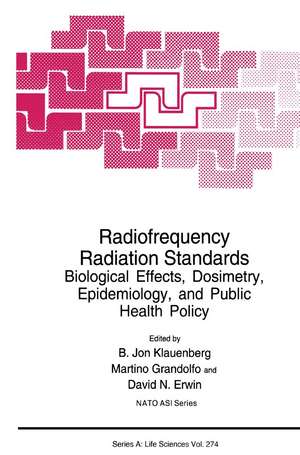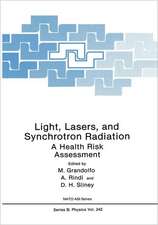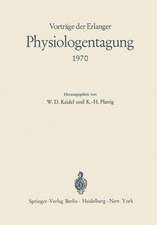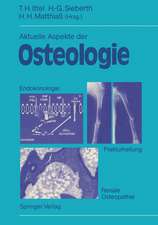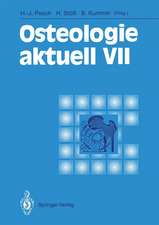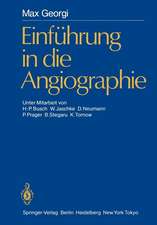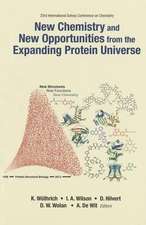Radiofrequency Radiation Standards: Biological Effects, Dosimetry, Epidemiology, and Public Health Policy: NATO Science Series A:, cartea 274
Editat de B. Jon Klauenberg, Martino Grandolfo, David N. Erwinen Limba Engleză Paperback – 22 mai 2013
| Toate formatele și edițiile | Preț | Express |
|---|---|---|
| Paperback (1) | 1419.20 lei 6-8 săpt. | |
| Springer Us – 22 mai 2013 | 1419.20 lei 6-8 săpt. | |
| Hardback (1) | 1426.71 lei 6-8 săpt. | |
| Springer Us – 30 apr 1995 | 1426.71 lei 6-8 săpt. |
Din seria NATO Science Series A:
- 15%
 Preț: 656.58 lei
Preț: 656.58 lei - 15%
 Preț: 655.13 lei
Preț: 655.13 lei - 15%
 Preț: 678.35 lei
Preț: 678.35 lei -
 Preț: 397.38 lei
Preț: 397.38 lei - 5%
 Preț: 377.87 lei
Preț: 377.87 lei -
 Preț: 397.76 lei
Preț: 397.76 lei - 18%
 Preț: 1232.41 lei
Preț: 1232.41 lei - 5%
 Preț: 731.64 lei
Preț: 731.64 lei -
 Preț: 413.15 lei
Preț: 413.15 lei - 15%
 Preț: 649.22 lei
Preț: 649.22 lei - 5%
 Preț: 369.45 lei
Preț: 369.45 lei -
 Preț: 407.56 lei
Preț: 407.56 lei - 5%
 Preț: 2162.19 lei
Preț: 2162.19 lei -
 Preț: 407.39 lei
Preț: 407.39 lei -
 Preț: 396.40 lei
Preț: 396.40 lei - 15%
 Preț: 663.93 lei
Preț: 663.93 lei -
 Preț: 387.38 lei
Preț: 387.38 lei -
 Preț: 393.13 lei
Preț: 393.13 lei -
 Preț: 398.35 lei
Preț: 398.35 lei -
 Preț: 401.24 lei
Preț: 401.24 lei - 15%
 Preț: 678.81 lei
Preț: 678.81 lei -
 Preț: 395.09 lei
Preț: 395.09 lei - 18%
 Preț: 952.40 lei
Preț: 952.40 lei - 15%
 Preț: 654.43 lei
Preț: 654.43 lei -
 Preț: 402.00 lei
Preț: 402.00 lei -
 Preț: 401.24 lei
Preț: 401.24 lei - 15%
 Preț: 655.27 lei
Preț: 655.27 lei -
 Preț: 394.71 lei
Preț: 394.71 lei -
 Preț: 384.48 lei
Preț: 384.48 lei - 5%
 Preț: 395.61 lei
Preț: 395.61 lei - 5%
 Preț: 1421.57 lei
Preț: 1421.57 lei - 15%
 Preț: 651.34 lei
Preț: 651.34 lei -
 Preț: 400.10 lei
Preț: 400.10 lei -
 Preț: 386.99 lei
Preț: 386.99 lei - 5%
 Preț: 386.11 lei
Preț: 386.11 lei -
 Preț: 403.91 lei
Preț: 403.91 lei - 15%
 Preț: 651.51 lei
Preț: 651.51 lei -
 Preț: 393.90 lei
Preț: 393.90 lei - 5%
 Preț: 376.43 lei
Preț: 376.43 lei -
 Preț: 400.26 lei
Preț: 400.26 lei - 5%
 Preț: 388.84 lei
Preț: 388.84 lei -
 Preț: 400.65 lei
Preț: 400.65 lei - 5%
 Preț: 740.58 lei
Preț: 740.58 lei - 18%
 Preț: 1225.16 lei
Preț: 1225.16 lei - 5%
 Preț: 386.46 lei
Preț: 386.46 lei -
 Preț: 421.82 lei
Preț: 421.82 lei
Preț: 1419.20 lei
Preț vechi: 1493.90 lei
-5% Nou
Puncte Express: 2129
Preț estimativ în valută:
271.56€ • 283.53$ • 224.75£
271.56€ • 283.53$ • 224.75£
Carte tipărită la comandă
Livrare economică 05-19 aprilie
Preluare comenzi: 021 569.72.76
Specificații
ISBN-13: 9781489909473
ISBN-10: 1489909478
Pagini: 472
Ilustrații: XIV, 456 p.
Dimensiuni: 155 x 235 x 25 mm
Greutate: 0.65 kg
Ediția:Softcover reprint of the original 1st ed. 1995
Editura: Springer Us
Colecția Springer
Seria NATO Science Series A:
Locul publicării:New York, NY, United States
ISBN-10: 1489909478
Pagini: 472
Ilustrații: XIV, 456 p.
Dimensiuni: 155 x 235 x 25 mm
Greutate: 0.65 kg
Ediția:Softcover reprint of the original 1st ed. 1995
Editura: Springer Us
Colecția Springer
Seria NATO Science Series A:
Locul publicării:New York, NY, United States
Public țintă
ResearchCuprins
Session A: Standards and Guidelines: Present and Proposed.- The Standardization Agreement (STANAG) on the Protection of NATO Personnel against Radiofrequency Radiation.- International Commission on Non-Ionizing Radiation Protection Progress towards Radiofrequency Field Standards.- European Communities Progress towards Electromagnetic Fields Exposure Standards in the Workplace.- ANSI/IEEE Exposure Standards for Radiofrequency Fields.- Radiofrequency Radiation Safety Guidelines in the Federal Republic of Germany.- Session B: Considerations for NATO Standardization Agreement.- New Technologies for Dosimetry: Slow Luminescence.- Biological Effects of High-Peak-Power Microwave Energy.- Some Recent Applications of FDTD for EM Dosimetry: ELF to Microwave Frequencies.- Microwave Exposure Limits for the Eye: Applying Infrared Laser Threshold Data.- New IEEE Standards on Measurement of Potentially Hazardous Radiofrequency/Microwave Electromagnetic Fields.- Risk Assessment of Human Exposure to Low Frequency Fields.- Session C: Military Operations and RFR Standards.- Navy Issues Surrounding Department of Defense Electromagnetic Radiation Safety Standards.- An Overview of the Proposed Industrial Hygiene Technical Standard for Non-Ionizing Radiation and Fields for the U.S. Department of Energy.- Radiofrequency Safety Practice in the UK Ministry of Defence.- Practical Control of Non-Ionizing Radiation Hazards.- DOD Implementation of New ANSI/IEEE Personnel Radiofrequency Standard.- Session D: Evaluation of the Epidemiologic Database.- Epidemiology and What It Can Tell Us.- Evaluation of Reproductive Epidemiologic Studies.- Epidemiology of Electromagnetic Fields and Cancer.- Session E: Evaluation of the Bioeffects Database I: Cellular.- The Dielectric Properties of Biological Materials.- Interaction of Calcium in Biological Systems with Electromagnetic Fields.- Effects of Weak High-Frequency Electromagnetic Fields on Biological Systems.- Effects of Radiofrequency Radation on Neurophysiological Stress Indicators.- Biological Effects Versus Health Effects: An Investigation of the Genotoxicity of Microwave Radiation.- Session F: Evaluation of the Bioeffects Database II: Systems Physiology.- Thermal Physiology of Radiofrequency Radiation Interactions in Animals and Humans.- Effects of Microwave Radiation Exposure on Behavioral Performance in Nonhuman Primates.- Effects of Radiofrequency Radiation Electromagnetic Field Exposure on Pineal/Melatonin.- Cardiovascular Responses to Radiofrequency Radiation.- Frequency and Orientation Effects on Sites of Energy Deposition.- Extrapolation of Animal Radiofrequency Radiation Bioeffects to Humans.- Session G: Evaluation of the Bioeffects Database III: Overview.- Bioeffects of Long-Term Exposures of Animals.- Evaluation of Electromagnetic Fields in Biology and Medicine.- Overview of the Radiofrequency Radiation Bioeffects Database.- Session H: Public Health Policy-Risk Communication.- How New RFR Standards Will Impact the Broadcast and Telecommunications Industries.- How the Popular Press and Media Influence Scientific Interpretations and Public Opinion.- Impact of Public Concerns about Low-Level Electromagnetic Fields on Interpretation of Electromagnetic Fields/Radiofrequency Database.- Communicating Risk of Electromagnetic Fields/Radiofrequency Radiation.- Attendance List.- Participants.
